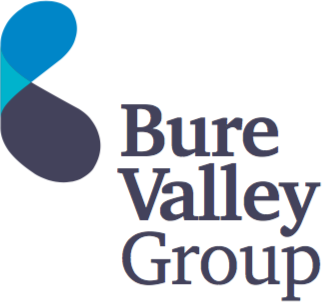Increasingly, human life is governed by online transactions. Whilst cash remains the preference of certain segments (e.g. UK pensioners), the world is undeniably moving towards a society based on digital payment systems. Below, we outline the market overview for the digital payments sector in 2024. We include the latest trends, key players and rising companies for investors to note. Moreover, the report highlights risks and opportunities to consider in the sector as readers construct and optimise their portfolios.
Market Overview
The Digital payment systems market has been experiencing rapid growth in recent years. In 2022, the global market stood at $98.8bn. The following year, this had risen to $111.2bn. By 2028, it is forecast to reach $193.7bn, representing a compound annual growth rate (CAGR) of 11.8%. The top five countries to adopt digital payment systems are (in descending order): the USA, China, the UK, Japan and Germany.
The main users fall into three broad categories: digital commerce, mobile POS payments (payment of goods) and digital remittances. The first has witnessed a remarkable rise between 2017 and 2024, growing from 329m users to 551m users. Mobile POS payments has also seen a sharp rise in users, from 5m to 682m.
Key trends
We cannot ignore the impact of the COVID-19 pandemic on the digital payments systems (DPS) market. Cash-reliant businesses struggled or died as customers were forced behind locked doors. Restricted from highstreet shopping, e-commerce and mobile payments soared in popularity. Apps such as PayPal, Venmo and Cash App became more intuitive for consumers, breaking down many long-held barriers to adoption (e.g. lack of trust in contactless tech).
Consumers across many segments – but especially the young – are discovering the remarkable speed and convenience of DPS solutions. Records and reciepts can be easily accessed (e.g. via an app), helping consumers manage their finances. Payments no longer rely on having the exact change in your pocket. Rather, you can simply tap your card or smartphone on a payment machine, and you’re on your way!
Businesses are also recognising the efficiencies that can be gained from DPS solutions. Streamlined checkout processes at supermarkets. Support for global transactions for an international hotel chain. Greater security for financial institutions. In particular, DPS can offer a goldmine of consumer transaction data, helping firms personalise their marketing and customer experiences to drive sales and retention.
Key players and new entrants
Naturally, some familiar names dominate much of the DPS sector. These include giants such as PayPal, Amazon Pay, Stripe, Apple Pay and Google Pay. Acquisitions have been a key feature of the landscape. In 2023 alone, 31 VC-backed payments companies were acquired, including SlimPay and PayU. Yet, there are still impressive signs of life in the early-stage space.
One example is Tunic Pay, a London-based firm offering an innovative approach to payment protection (against scams). Another is Yonder, another UK startup but with a focus on offering credit cards which provide premium lifestyle rewards – especially to European consumers, who seem to have fewer options compared to US citizens.
A third case study is Light, from Denmark. Here, the company focuses on its enterprise resource planning (ERP) tool for multinational companies, helping with accounting and resource management. It competes directly with US-based ERP provider NetSuite, using an “SRP” model (Smart Financial Platform) instead, lowering budget and timescale requirements for B2B customers. It even integrates seamlessly with apps like Slack.
Opportunities & risks
One clear benefit of digital payment systems is their global reach. Paper cash is limited by its need to be physically handed from one person/business or another, requiring close proximity. Digital payment platforms can send fiat currency across the world almost instantaneously. A British customer in the UK could quickly pay a Vietnamese designer for digital artwork, for instance. DPS also has great potential in the world of cryptocurrency and blockchain, allowing for streamlined transactions without the need for intermediaries.
DPS solutions offer a great opportunity for unbanked populations across the globe to finally access financial services. Many rural and remote regions have long suffered from a lack of connectivity and digital literacy. Digital payment providers are in a unique position to reach these untapped “blue ocean” markets. This opens up many exciting doors such as further economic growth for developing countries, cross-selling opportunities for firms and financial inclusion initiatives for local communities.
However, challenges continue to inhibit the huge global growth potential of DPS. Firstly, there continues to be an absence of global standards for cross-border payments. Government regulations vary between countries, especially regarding data storage and how transactions can be conducted. This can be frustrating for the user experience, which often becomes inconsistent across borders. There has been some progress with the establishment of the worldwide common ISO 20022 standard. However, widespread adoption and consensus remain lacking.
Secondly, cyber threats continue to blight DPS providers and users. Electronic payments via digital wallets, peer-to-peer (P2P) transfers and other means (e.g. online banking) can be vulnerable to online attacks. One study by JP Morgan cites a 30% increase in companies reporting a rise in DPS fraud. Adherence to policies, such as the PCI-DSS standard, helps to protect against such threats. However, innovation and vigilance will be required to improve the defensiveness of DPS solutions going forward.
Invitation
If you are interested in expanding your portfolio into these kinds of exciting spheres of investing, then we invite you to get in touch with us here at Bure Valley and consider joining our exclusive investor network:
+44 160 334 0827


